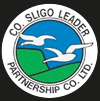Christine Mackey's profile
My Posts
The Nature of Sligo: Kids Own Publishing | The Nature of Sligo: Kids Own Publishing
2008-11-27
The Nature of Sligo: Kids Own Publishing
Week 2. 20th November 2008
"for the artist communication with nature remains the most essential condition. The artist is human; himself (herself) nature; part of nature within natural space."
Paul Klee - Pedagogical Sketchbook (1953)
I have decided to introduce a number of artists work who I felt have a significance in relation to the overall theme of this project and for whom drawing (mark-making) was a imperative mode of production in terms of thinking, making and as an observational forum to make new discoveries of the world around us.
For this week I put together a slide projection of the work of Paul Klee, in particular his drawings and sketch-book work of landscape studies and natural formations.
The children were introduced to a variety of art-terms, mediums and the personal motivation behind Klee`s work. We discussed each drawing and painting in detail so as to open a discussions for the children to decide on what the work could be about, this was anchored on the title of each piece.
We discussed the medium applied, focusing on the how Klee used lines and its various characteristics, his use of texture, pattern, light and colour and his symbiotic use of form: square, triangle and circle.
In the afternoon we went out on our first nature-walk. The children brought their sketch-books and pencils with them. We walked up to a green area near the priests house paying particular attention to a tree truck as its physical structure alluded to a drawing by Klee. The children spent time drawing this form using a small magnifying glass that I had provided them with. Viewing the details of the tree truck as a lines in nature, lines that indicated the age of the tree and lines that suggested mobility or as Klee would write "an active line on a walk". We also drew studies of other trees and natural objects in that area.
We left this area and walked down to a beautiful Sycamore Tree. I wrapped large sheets of paper around the tree for the children and introduced them to a technique `frottage` which is another way of drawing/mark-making in a very free way. Traditionally it is a rubbing of an object onto any surface to create a design. �Frottage� was adapted by the Surrealists as an �automatic� technique for making drawings based on chance. Their approach explored the realm of free association and the subconscious for creative production.
Thomas had a digital camera and a number of the children were allowed to take photographs of the tree and surrounding area. We would like to build a bank of images and drawings from which the children will develop a larger project in the future.
Back in school the children sketched a number of leaves and plants, that had been collected en-route; naming and archiving this
material in their sketch-books. They spent time drawing these objects paying particular attention to the notion of the line as contour or the trace of an object.
And for the last 30 minutes of the glass each child displayed their work which they had titled. We also re-capped on Klee and other ideas that had been discussed throughout the day.


No comments added